by Lacey Cooke | Apr 19, 2019 | 01 What's New, Records & databases
It’s a great week for new genealogy records online! We’re featuring German vital records now available at Ancestry.com, including civil registers, parish records, and census records. You can also explore two updated Italian records collections at FamilySearch, plus check out an expert interview for tips on researching your Italian ancestors. Lastly, Findmypast is continuing to to expand their international records with a new Jamaican records collection. Happy researching!
Featured: German Genealogy Records
Ancestry.com, one of the Genealogy Giants subscription websites, has several new German vital records collections now available online. Specifically, Trier, Germany.
You can find a wealth of genealogical information in these civil registers, parish records, and census records. Look for names, dates, locations, parents and spouse names, occupations, and even some narrative comments in margins.
- Trier, Germany, Births, 1798-1904
- Trier, Germany, Baptisms, Marriages, and Burials, 1600-1798
- Trier, Germany, Marriages, 1798-1924
- Trier, Germany, Deaths, 1798-1950
- Trier, Germany, Census, 1795-1864
The city of Trier has an interesting history, and is among the oldest cities in Germany. It was founded by the Celts in the late-4th century BC and was known as Treuorum. Later on the city was conquered by the Romans in the late-1st century BC and renamed Trevorum or Augusta Treverorum.
In the Middle Ages, the Archbishop-Elector of Trier was an important prince of the church, and Trier is the oldest seat of a bishop north of the Alps. The archbishop-electorate controlled land from the French border to the Rhine. The Archbishop-Elector also had great significance as one of the seven electors of the Holy Roman Empire. You can learn more about Trier and more available genealogy records at the FamilySearch wiki page for the city here.
Additionally, there is a new collection for Barnim, Germany, Deaths, 1874-1966. The name directories are arranged alphabetically according to the last name of the deceased. They are bound as separate volumes covering several years each. They contain the following details: sequential number, last names and given names of the deceased, residence, and cross reference to death register.
Updated Italian Genealogy Records at FamilySearch
Over at the all-free website FamilySearch, two Italian genealogy records collections have been updated.
If you’re searching for Italian ancestors, check out episode #207 of The Genealogy Gems Podcast! In this episode, you’ll hear from Mary Tedesco, a co-host of PBS’ Genealogy Roadshow. Mary shares stories and tips about tracing Italian and Italian-American roots.
New Jamaican Genealogy Records Online
Lastly, we head to Findmypast for an exciting new addition to their database. While Findmypast focuses on British and Irish records, they are rapidly expanding their international collections as well!
The latest in this expansion is a big boost of genealogical records for Jamaica. The update includes five new sets encompassing over 2.4 million parish and civil register entries for births, baptisms, marriages, deaths and burials dating back to the mid-17th century.
Jamaica is divided into three counties:
- Cornwall
- Middlesex
- Surrey
Within each county are parishes, the fundamental civil administrative unit. Genealogy records in Jamaica are kept at this local level.
At Findmypast you can currently search:
These collections may help you discover your Caribbean ancestors and add a Jamaican branch to your family tree.
German Genealogy Research Tips From an Expert
Researching your ancestors deep into Germany simply doesn’t happen unless you know the name of the village of origin. In this video presentation renowned German genealogy expert James M. Beidler goes over the sources to tie your immigrant to a Heimat (Heimat (pronounced [ˈhaɪmat]) is a German word translating to “home” or “homeland” ) and then find the village and its records!
Lacey has been working with Genealogy Gems since the company’s inception in 2007. Now, as the full-time manager of Genealogy Gems, she creates the free weekly newsletter, writes blogs, coordinates live events, and collaborates on new product development. No stranger to working with dead people, Lacey holds a degree in Forensic Anthropology, and is passionate about criminal justice and investigative techniques. She is the proud dog mom of Renly the corgi.
Disclosure: This article contains affiliate links and Genealogy Gems will be compensated if you make a purchase after clicking on these links (at no additional cost to you). Thank you for supporting Genealogy Gems!
by Lisa Cooke | Oct 17, 2018 | 01 What's New, Genealogy Gems Podcast, Listeners & Readers |
The Genealogy Gems Podcast
Episode #222
with Lisa Louise Cooke
Download this episode (mp3)
In honor of Family History Month, Lisa celebrates YOU! This episode is packed with comments, tips and questions from Genealogy Gems fans. Topics range from podcasting to metal detecting, must-use resources and inspiring genealogy discoveries. You’ll also hear from Kirsty Gray at THE Genealogy Show in the UK.
NEWS: INTERNET ARCADE
Internet Archive blog post: Over 1,100 New Arcade Machines Added to the Internet Arcade
Internet Arcade on the Internet Archive
BONUS CONTENT for Genealogy Gems App Users

If you’re listening through the Genealogy Gems app, your bonus content for this episode is a great tip from a fan on an essential resource for those of you with roots in Northern Ireland. The Genealogy Gems app is FREE in Google Play and is only $2.99 for Windows, iPhone and iPad users.
MAILBOX: A PODCAST SKEPTIC?

Gary recommends Genealogy Gems Premium eLearning! Get access to more than 50 Premium Videos and 160 Premium Podcast episodes. It’s the ultimate ongoing genealogy education! Click here to read more about it. Gary mentions becoming a “happy user of” Evernote who now protects his computer with Backblaze cloud back-up service, enjoys using Google Earth for genealogy and learning more about DNA. Click on these links to start exploring for yourself—and to watch a Google Earth video for free.

MAILBOX: CUBAN GENEALOGY PODCAST
Cuban Genealogy Podcast
MAILBOX: METAL DETECTING FOR GENEALOGY
Bureau of Land Management (BLM) and Homestead records
Premium eLearning members also have access to these video tutorials:
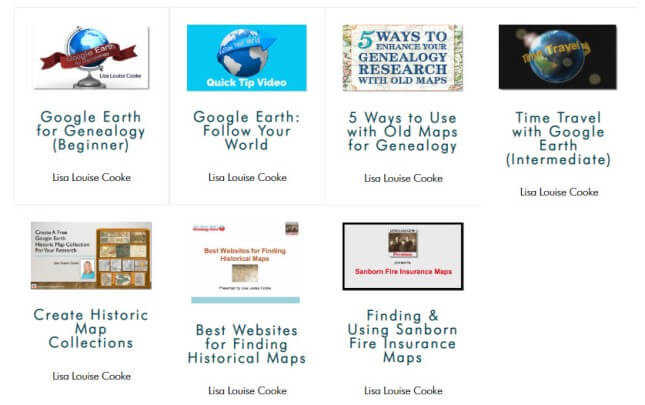
MAILBOX: LOCAL HISTORY BOOK FIND BY ROBIN
Genealogy Gems Podcast episode #220
WorldCat.org

Lisa Louise Cooke uses and recommends RootsMagic family history software. From within RootsMagic, you can search historical records on FamilySearch, Findmypast and MyHeritage.
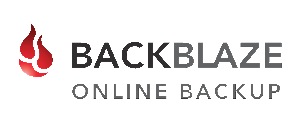
Keep your family history research, photos, tree software files, videos and all other computer files safely backed up with Backblaze, the official cloud-based computer backup system for Lisa Louise Cooke’s Genealogy Gems. Learn more at https://www.backblaze.com/Lisa.
MAILBOX: CORAL’S FRIDAY RECORD DISCOVERY
The Friday record post discoveries appear weekly on the Genealogy Gems website. Subscribe to the free Genealogy Gems newsletter to receive a free weekly email with links to these posts, along with tips, inspiration and money-saving deals.
MAILBOX: VEHICLE REGISTRATIONS
On Florida Memory: Early Auto Registrations, 1905-1917
MAILBOX: GENI.COM QUESTION
Geni.com
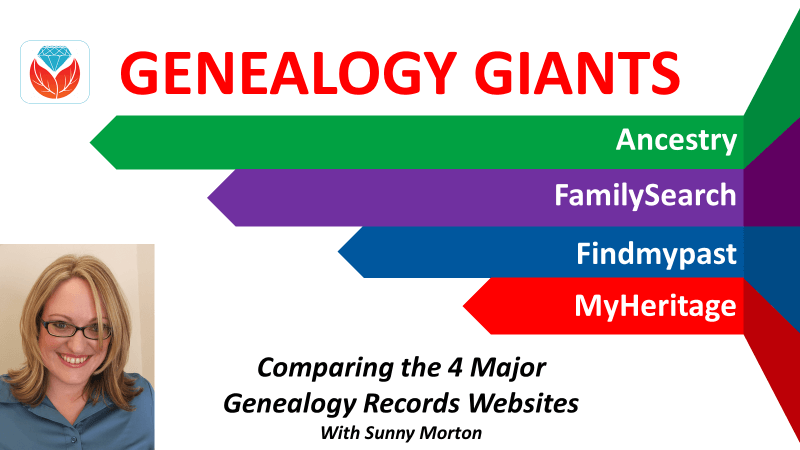
Tip: The Premium eLearning video “Genealogy Giants: The 4 Top Records Websites” explains the difference between individual and collaborative trees.

MyHeritage.com is the place to make connections with relatives overseas, particularly with those who may still live in your ancestral homeland. Click here to see what MyHeritage can do for you: it’s free to get started.
MAILBOX: 3 MILLION GERMAN NAMES
Lisa’s post on German WW1 ancestors
Tim recommends the Onlineprojekt Gefallenendenkmäler
MAILBOX: TRISHA’S INSPIRING JOURNEY
Another Premium eLearning video recommendation (click to see landing page):
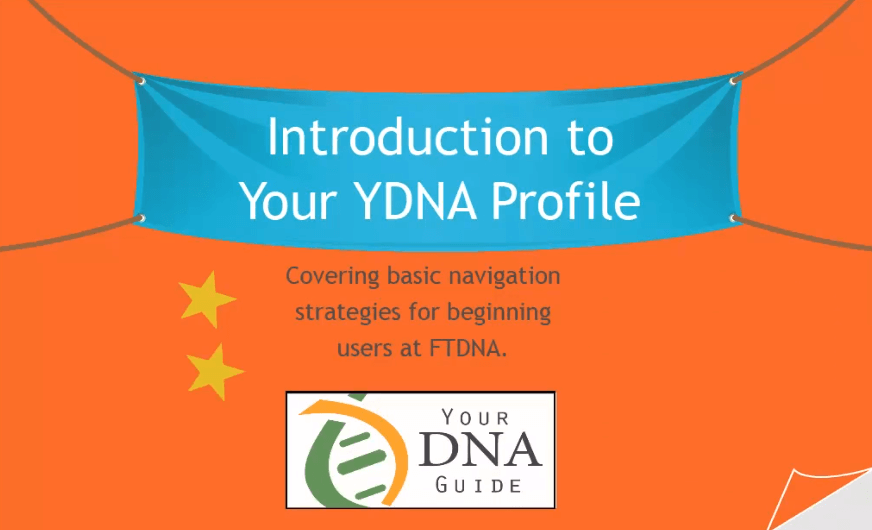
MAILBOX: KIRSTY GRAY

THE Genealogy Show
Kirsty Gray has over 15 years ofresearch experience and has her foot in many genealogical doors around the world. Her first involvement in family history came at the tender age of seven years with her maternal grandfather’s tree in hand. Obsessed with her great-grandmother’s maiden name of Sillifant, Kirsty began a surname study on the name in 1999, publishing tri-annual journals on the surname for more than ten years. Founder member and Chair (now Secretary) of the Society for One-Place Studies, Kirsty has two places registered, on the Devon/Cornwall border and is considering another study of a hamlet in Cornwall. In November 2014, Kirsty founded The Surname Society with five other genealogists across the globe and the membership is already close to 500!
PROFILE AMERICA: HOME MAKING
PRODUCTION CREDITS
Lisa Louise Cooke, Host and Producer
Sunny Morton, Contributing Editor
Hannah Fullerton, Production Assistant
Lacey Cooke, Service Manager
Disclosure: This page contains affiliate links and Genealogy Gems will be compensated if you make a purchase after clicking on these links (at no additional cost to you). Thank you for supporting this free podcast and blog!
Download the show notes
by Lisa Cooke | Feb 12, 2018 | 01 What's New, German |
For a long time, German census records were thought not to exist. But they do! A leading German genealogy expert tells us how they’ve been discovered and catalogued—and where you can learn about German census records that may mention your family.
Thanks to James M. Beidler for contributing this guest article. Read more below about him and the free classes he’ll be teaching in the Genealogy Gems booth at RootsTech 2018 in a few short weeks.
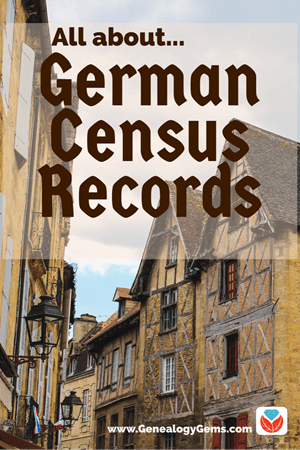
German census records DO exist
One of the truisms of researching ancestors in America is that the U.S. Census is a set of records that virtually every genealogist needs to use.
From its once-a-decade regularity to its easy accessibility, and the high percentage of survival to the present day, the U.S. Census helps researchers put together family groups across the centuries.
On the other hand, the thing that’s most distinctive about German census records is that for many years they were thought not to even exist.
For Exhibit A, look at this quote from a book published just a few years ago: “Most of the censuses that were taken have survived in purely statistical form, often with little information about individuals. There are relatively few censuses that are useful to genealogists.”
The book from which the above statement was taken is The Family Tree German Genealogy Guide. And the author of that book is … uh, well … me!
In my defense, this had been said by many specialists in German genealogy. The roots of this statement came from the honest assessment that Germany, which was a constellation of small states until the late 1700s and not a unified nation until 1871 when the Second German Empire was inaugurated, had few truly national records as a result of this history of disunity.
As with many situations in genealogy, we all can be victims of our own assumptions. The assumption here was that because it sounded right that Germany’s fractured, nonlinear history had produced so few other national records, those census records didn’t exist.
A few census records from northern German states (see below) had been microfilmed by the Family History Library, but for all intents and purposes, a greater understanding of the “lost” German census records had to wait for a project spearheaded by Roger P. Minert, the Brigham Young University professor who is one of the German genealogy world’s true scholars.
Finding lost and scattered German census records
It can be said that Brigham Young University professor Roger Minert “wrote the book” on the German census. That’s because he literally did: German Census Records, 1816-1916: The When, Where, and How of a Valuable Genealogical Resource. A sample page is shown below.
Minert had a team help him get the project rolling by writing to archivists in Germany before he took a six-month sabbatical in Europe. During this time, he scoured repositories for samples of their German census holdings (To some extent, Minert’s project had echoes of an earlier work led by Raymond S. Wright III that produced Ancestors in German Archives: A Guide to Family History Sources).
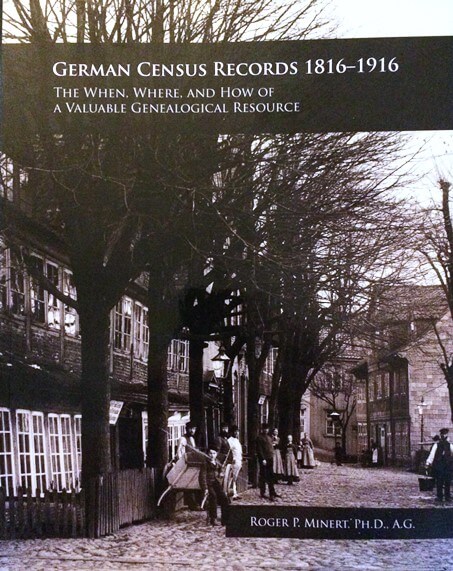
What resulted from Minert’s project was the census book and a wealth of previously unknown information about German censuses.
While a few censuses date to the 18th century in the German states (some are called Burgerbücher, German for “citizen books”), Minert found that the initiation of customs unions during the German Confederation period beginning after Napoleon in 1815 was when many areas of Germany began censuses.
The customs unions (the German word is Zollverein) needed a fair way to distribute income and expenses among member states, and population was that way. But to distribute by population, a census was needed to keep count, and most every German state began to take a census by 1834.
Until 1867, the type of information collected from one German state to another varied considerably. Many named just the head of the household, while others provided everyone’s names. Some include information about religion, occupation and homeownership.
The year 1867 was a teeter-totter point Minert calls it “for all practical purposes the first national census.” Prussia—by then the dominant German state and whose king would become the emperor just a few years hence—spearheaded the census effort.
After the founding of the Second German Empire, a census was taken every five years (1875 – 1916, the last census being delayed by World War I). While there was some variance in data from one census to another, they all included the following data points:
- names of each individual,
- gender,
- birth (year and, later, specific dates),
- marital status,
- religion,
- occupation,
- citizenship,
- and permanent place of residence (if different from where they were found in the census).
While some of these censuses are found in regional archives within today’s German states, in many cases the census rolls were kept locally and only statistics were forwarded to more central locations.
Interestingly, there has been a lack of awareness even among German archivists that their repositories have these types of records! Minert says in his book that in three incidences, archivists told him their holdings included no census records, only to be proved wrong in short order.
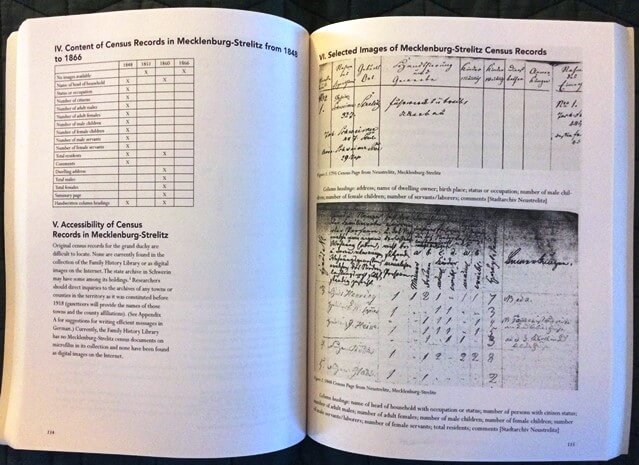
Minert’s book goes through the old German Empire state by state and analyzes where researchers are likely to find censuses. For each state, there is also a chart on the pre-Empire censuses and what information they included.
Researchers wishing to access these records will often need to contact local archives. If you’ve uncovered a village of origin for an immigrant, you could contact them directly by searching for a website for the town, then emailing to ask (politely but firmly) whether the archives has census records.
FamilySearch has placed online German census records for Mecklenburg-Schwerin (1867, 1890 and 1900; the one shown below is from 1867).
The Danish National Archives has some census records online for Schleswig-Holstein (much of the area was Danish until they lost a war with Prussia in 1864).
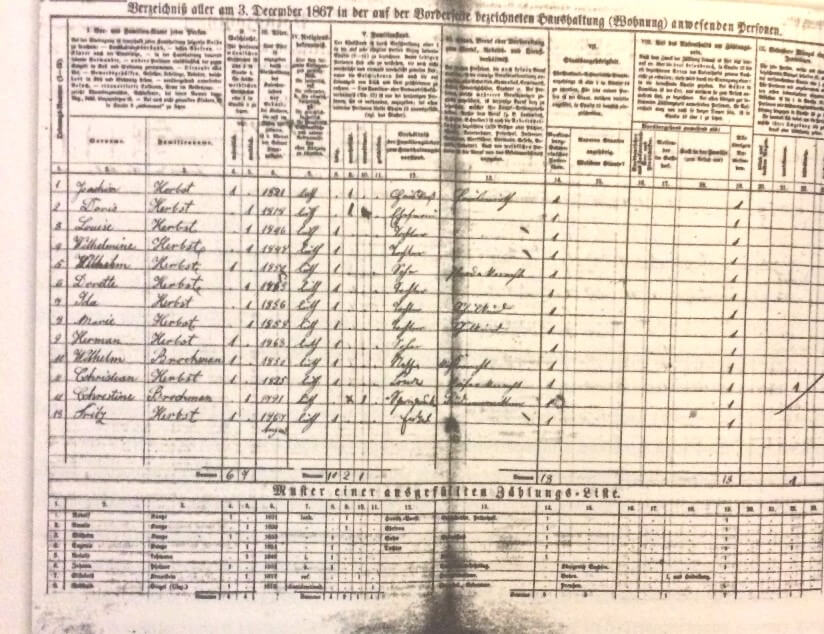
Other Census-Like Lists
In addition to these censuses, many areas of Germany have survivals of tax lists that serve as a record substitute with some data points that are similar to censuses. The lists generally show the name of the taxpayer and the amount of tax paid.
In some cases, versions of the lists that include the basis for the tax (usually the value of an interest in real or personal property) have survived. The lists may also include notes about emigration. Here’s a sample tax record from Steinwenden Pfalz.
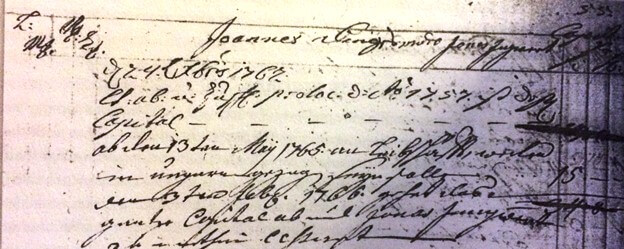
Some of these tax lists are available in the Family History Library system.
The best “clearinghouse” that reports the holdings of various repositories in Germany is Wright’s Ancestors in German Archives. As with the census records, the best way to contact local archives directly would be to search for a website for the town. E-mail to ask whether such lists are kept in a local archive.
In my personal research, tax records have proved crucial. For example, they confirmed the emigration of my ancestor Johannes Dinius in the Palatine town of Steinwenden. These records showed the family had left the area a few months before Dinius’ 1765 arrival in America.
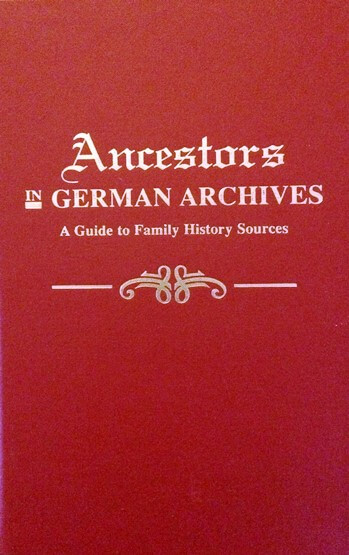

James M Beidler is the author of The Family Tree German Genealogy Guide and Trace Your German Roots Online.
Disclosure: This article contains affiliate links and Genealogy Gems will be compensated if you make a purchase after clicking on these links (at no additional cost to you). Thank you for supporting Genealogy Gems
by Lacey Cooke | Dec 8, 2017 | 01 What's New, Ancestry, Canadian, German, Records & databases
Big records updates at the Genealogy Giant website Ancestry.com! Brand new collections of birth, marriage, death, and census records for Canada were added this week, along with a Remembrance Book for the 100th anniversary of the Halifax explosion. Additionally, new vital records are now available for Germany.
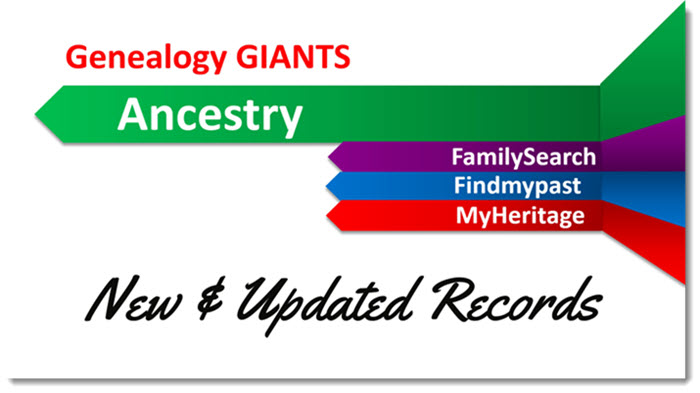
Canada – Birth, Marriage, Death, and Census Records
This year, December 6th marks the 100th anniversary of the Halifax explosion, which was a devastating maritime disaster in Nova Scotia, Canada. Ancestry has recently made available the ‘Halifax Explosion Remembrance Book,’ an online searchable database with detailed information for 1,946 casualties – more than 300 of whom are recently-confirmed and identified victims.
Ancestry also had a huge update of vital and census records this week for Canada:

AncestryDNA for Canada is on sale for just $99! Reg. $129 CAD. Sale ends 12/24/17. Excludes tax & shipping.
Alberta. Explore the new Births Index, 1870-1896, the Deaths Index, 1870-1966, and the Marriages Index, 1898-1942. Note that the marriage index is slightly irregular, in that each image only includes either the bride or the groom and their marriage year.
Newfoundland. Search baptisms and marriage records in the new collection of Church Records, 1793-1899. You’ll also find records from various churches in Newfoundland in the Births, Marriages, and Deaths, 1757-1901 collection, and the Births, Marriages, and Deaths, 1850-1949 collection. Also available are the 1921 Census, the 1935 Census, and the 1945 Census. Those databases originate from the Newfoundland Department of Tourism, Culture, and Recreation.
New Brunswick. New vital records collections start with Births and Late Registrations, 1810-1906. Then you’ll find Marriages, 1789-1950, which include registers, certificates, delayed registrations, and returns. And Deaths, 1888-1938 is also now online.
Prince Edward Island. Baptisms, Marriages, Burials, 1780-1983 is comprised of church records for Prince Edward Island. The Marriage Registers, 1832-1888 collection was created from newspapers, church records, and other sources that may or may not be provided. The Death Card Index, 1810-1913 contains pictures of the index cards from the Prince Edward Island Provincial Archives.
Nova Scotia. Lastly, Antigonish Catholic Baptisms, Marriages, and Burials, 1823-1905 are now available for Nova Scotia. The earlier registers are written in paragraph format, while later registers are typically pre-printed forms with information filled in by hand.
German Vital Records
Lots of new vital records collections for Germany recently became available, starting with Waldshut-Tiengen, Births, Marriages, and Deaths, 1870-1945. This collection of civil registers includes records from 9 additional communities which are today boroughs of Waldhut-Tiengen.
Next are Erfurt, Germany, Births, 1874-1901 and Marriages, 1874-1900. Additional events from the life of the child or the couple were sometimes recorded later on in the margins, but have not been indexed.
You’ll also find Zschopau, Germany, Births, 1876-1914, Marriages, 1876-1920, and Deaths, 1876-1958 now at Ancestry. It may be helpful to note that during the time period of these collections until 1918, Zschopau belonged to the Kingdom of Saxony.
Finally, Traunstein, Germany, Births, 1876-1905, Marriages, 1876-1934, and Deaths, 1876-1978 are also online, where you’ll find names, dates of birth, dates of deaths, witnesses, informants, parents, signatures, and other information.
Get the most out of Ancestry!
 Getting started on Ancestry.com can be a little daunting. As one of the world’s top genealogy websites, it’s packed with information about millions of people–perhaps including your ancestors. These step-by-step instructions will help you start building your family tree and learning more about your heritage. Click to read our recent article Getting Started on Ancestry.com.
Getting started on Ancestry.com can be a little daunting. As one of the world’s top genealogy websites, it’s packed with information about millions of people–perhaps including your ancestors. These step-by-step instructions will help you start building your family tree and learning more about your heritage. Click to read our recent article Getting Started on Ancestry.com.
Disclosure: This article contains affiliate links and Genealogy Gems will be compensated if you make a purchase after clicking on these links (at no additional cost to you). Thank you for supporting Genealogy Gems!
by Lisa Cooke | Sep 27, 2017 | 01 What's New, German, Translation tips |
Need help reading or translating German genealogical documents? These top German translation websites will help you identify and translate old German letters, words, abbreviations, street names, and occupations. These online resources are so good, even the experts use them! See how they can help your German family history.

Thanks to Katherine Schober of SK Translations and the instructor of the innovative online course on learning how to read the old German script and handwriting for this guest post.

Those of you who have braved the world of German genealogy may have run into a beautiful but solid genealogical “brick wall:” old German handwriting. “Kurrentschrift” (literally: “running script”) was the main form of writing in German-speaking lands until the mid-20th century. Unfortunately, this elegant script is often a major obstacle for modern-day genealogists searching for their German ancestors.
But it doesn’t have to be! While I recommend contacting a professional for the more complicated texts (I’d be happy to be of service), you can often make substantial progress in transcribing and translating old German documents with the help of several fantastic online resources.
Top 9 German Translation Websites and Resources
These are my favorite German translation websites for genealogy (and yes, I use them myself):
This is a great site for transcribing German genealogy documents, especially if you can only recognize some of the letters in a word. Choose either “words ending with” (Wörter mit Endung) or “words beginning with” (Wörter beginnend mit) and type in the first or last letters of the word you are deciphering.
For example, if you can only recognize “tum” at the end of the word, type in “tum” under “Wörter mit Endung”. It will then show you all the German words ending in “tum”, which may help you to recognize what your handwritten word could be.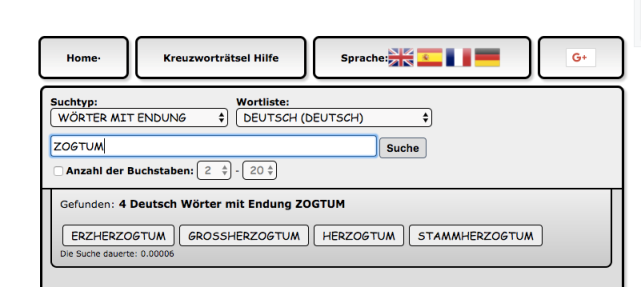
This site offers a nice key of the Kurrent letters and the corresponding letters in our alphabet.
If you see an abbreviation in your genealogy document but aren’t sure what it stands for, you can type it into this website and it will provide you with a list of possible German words for your abbreviation.
Online German Dictionaries:
LEO, Online Dictionary by Langescheidt, and dict.cc are all extensive online German dictionaries. If one of these dictionaries doesn’t have a definition for a word, one of the other two might.
This is a very helpful translation site. Unlike Google Translate, it shows you words and phrases translated into English by actual translators and not machines. You receive the definition of the word, plus pages of various sample sentences that include your word/phrase in a contextual format.
This is a good site for finding the meanings of old-fashioned German words. Modern dictionaries often do not have definitions for the outdated words found in genealogy documents, but this online collection of old German dictionaries does. Knowledge of German required.
This website provides an A-Z list of old-fashioned German occupations with their modern-day German translation.
If you know that a word in your document is a street (“Straße”), but can’t figure out which street it is, use this site to help you out. First, type in the city in the “Ortsverzeichnis A-Z” (gazetteer). The site then pulls up a map of the city and an A-Z list of street names. If you know at least some of the letters in your street name, this list can help you to recognize the correct transcription of the word.
This site allows you to type in any word to see how it would look in Kurrentschrift. While everyone’s handwriting was, of course, different, it is nice to get an idea of what a word could have looked like in the old-fashioned script. For example, “Kurrentschrift:”

 Katherine Schober of SK Translations specializes in translating German genealogical and historical documents. She also teaches the online course that can help you learn how to read the old German script and handwriting. Learn more here.
Katherine Schober of SK Translations specializes in translating German genealogical and historical documents. She also teaches the online course that can help you learn how to read the old German script and handwriting. Learn more here.
She recently joined Lisa Louise Cooke on the Genealogy Gems Premium Podcast episode #151 with creative, use-in-any-language Google strategies for translating documents and identifying ancestral names and places.
Click here to see what else has aired on the Genealogy Gems Premium Podcast–and consider becoming a Premium member to get access to the entire Premium Podcast archive (it could see you through a whole year’s worth of workouts, commutes, or household chores!).
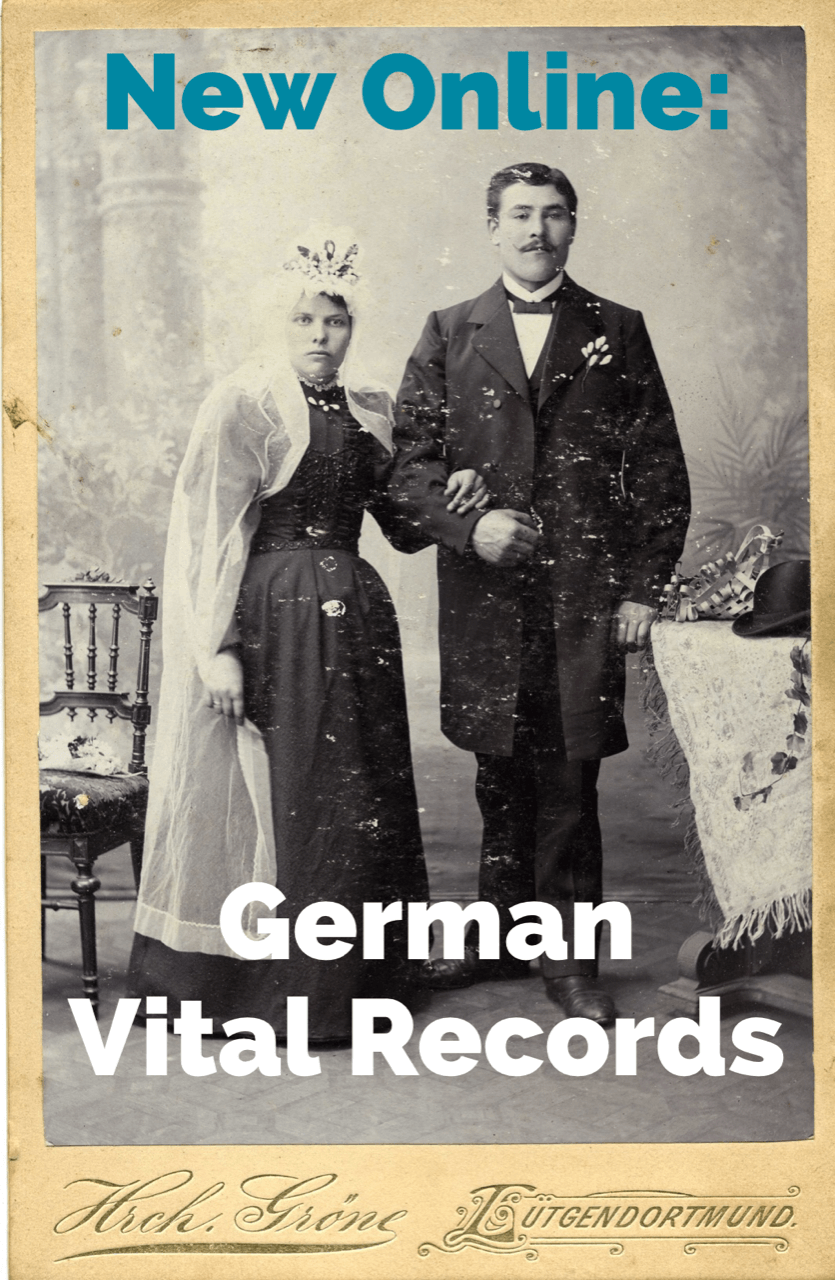


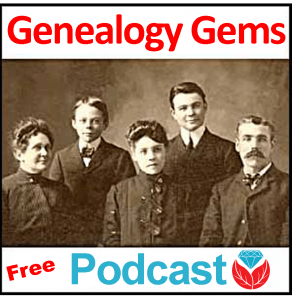



















 Getting started on Ancestry.com can be a little daunting. As one of the world’s top genealogy websites, it’s packed with information about millions of people–perhaps including your ancestors. These step-by-step instructions will help you start building your family tree and learning more about your heritage. Click to read our recent article
Getting started on Ancestry.com can be a little daunting. As one of the world’s top genealogy websites, it’s packed with information about millions of people–perhaps including your ancestors. These step-by-step instructions will help you start building your family tree and learning more about your heritage. Click to read our recent article 



 Katherine Schober of
Katherine Schober of 


